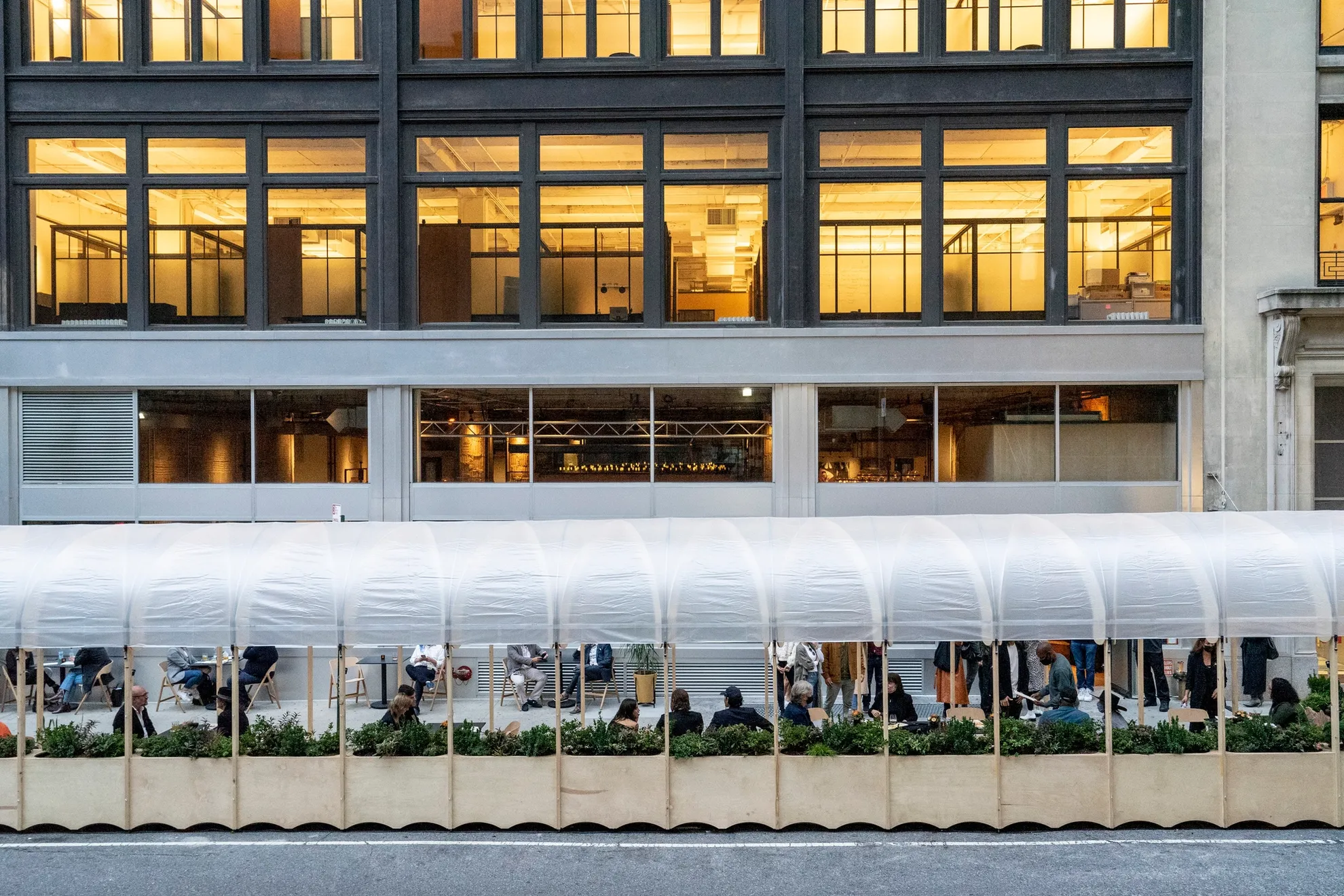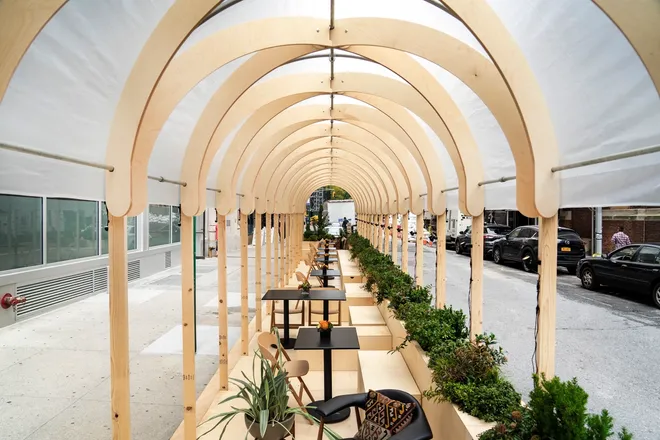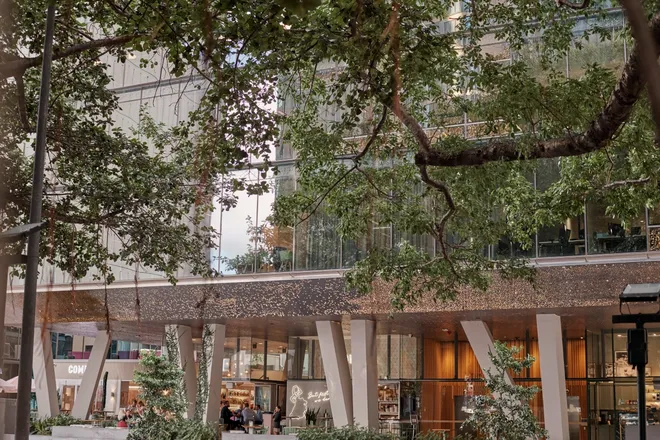Media Stories — February 5, 2022
Inventive Aussies retread the boards in New York
Featured in The Australian. Thursday February 3, 2022.
By Milanda Rout.
A trio of Australian architects has turned plywood that covered New York shopfronts during the 2020 protests into an innovative start-up that recycles it into outdoor furniture for city restaurants.

Nikita Notowidigdo and Nick Flutter, with their plywood structure in Neuehouse, New York, are repurposing shopfront boarding, graffiti and all.
Picture: Paola + Murray/WISH
The expats from architecture firm BVN collected the plywood by hand, designed and cut it into chairs, tables and road barriers/planter boxes that are now used by businesses all over Manhattan.
“We were just in this terrible situation and there was so much awful stuff happening and we just wanted to do something good,” one of the architects, Nick Flutter, tells the February issue of WISH magazine of being in New York during the height of the pandemic and the protests.
“We really did not want all that plywood that covered the city going to landfill.”
Flutter and his colleague Nikita Notowidigdo, and their boss Bill Dowzer, rang every person they knew to try to get hold of the plywood and hit pay dirt when the Rockefeller Centre said they could have 300 sheets.
They hired a moving van, a storage unit and collected the plywood themselves.
We had these two ideas about kit-of-parts furniture and recycling and sustainability and circularity of plywood that we were trying to weave together. It seemed like a cool thing to do and a good experiment to do something here to see if we could push it a bit further.
Nick Flutter, Architect BVN

At the same time the City of New York and then-mayor Bill de Blasio announced that restaurants – which had been shut since March that year – could reopen as long as they offered more Covid-safe outdoor dining on either the sidewalk or the parking spot in front of their premises.
So the trio decided to design furniture they could make from the plywood for outdoor dining.
The first kits included chairs, tables and barriers/planter boxes, and they began working with restaurants and cafes in lower Manhattan.
“The streets feel extremely vibrant and I think outdoor dining has given the city this new vibe it didn’t have before,” Flutter said.
“The streets are now full of these semipermanent structures that can be something as simple as some planter boxes and tables and chairs, which is what you may see in Sydney. But they can also be as complex as fully airconditioned buildings with double glazing.”
What started off as a project has become a business – called Re-Ply – and the architects have worked on 25 installations across New York including for top restaurants such as Gramercy Tavern. They also have showcased the art painted or graffitied on the boards during the protests.





